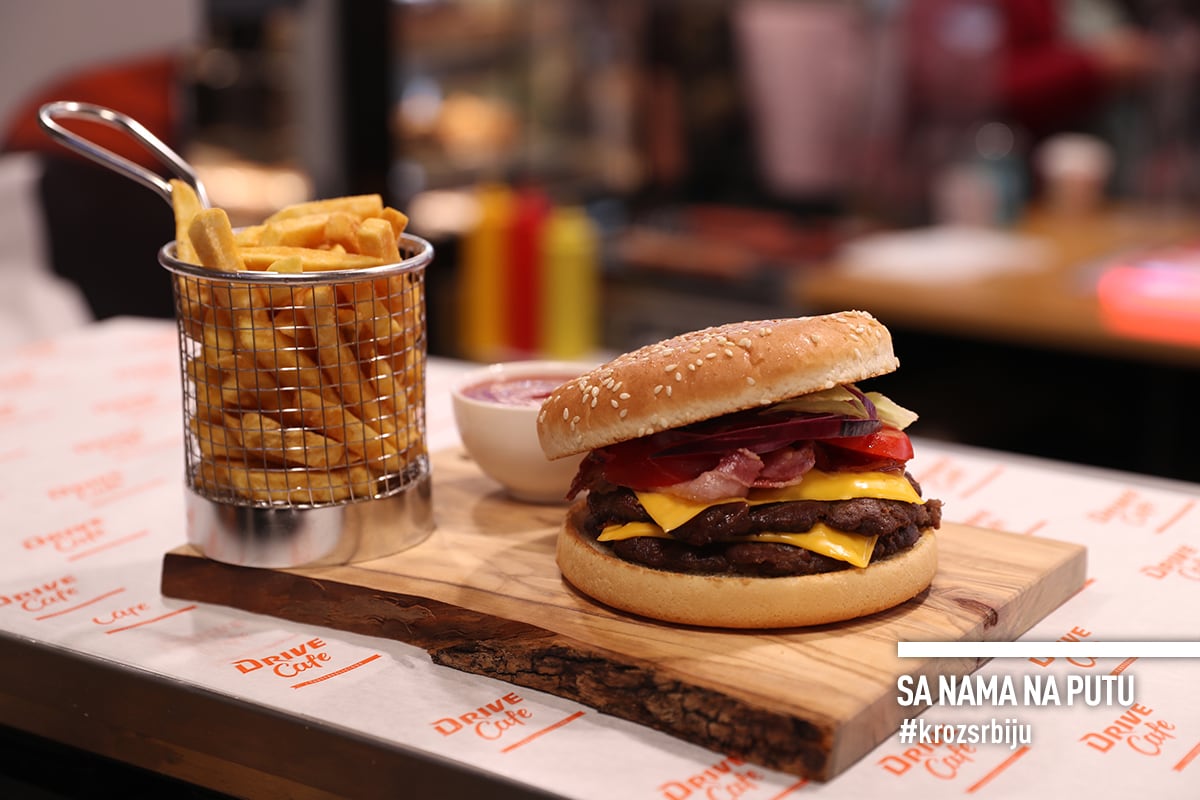They say that rich people go to the sea in winter, to exotic places, and spend hot and stuffy summers in the mountains. Quite understandable. We may not be able to afford distant paradise islands in winter, but we certainly can afford summer on mountain. To follow rich people at least half-way. The choice is plentiful. We choose a high-altitude beauty in southwestern Serbia, between Ivanjica and Novi Pazar, where nature still reigns. A journey without passports and accompanying complications. A suitcase full of good mood and exploratory curiosity.
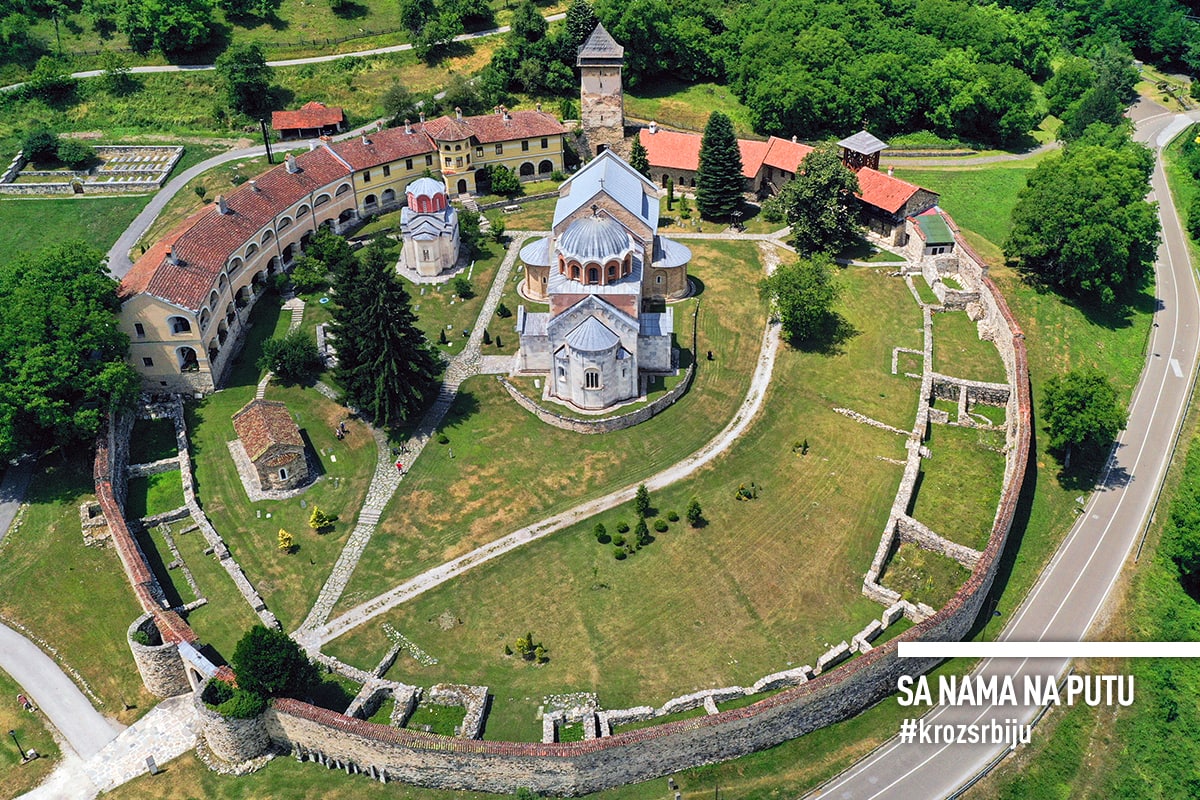
Why visit Golija and Studenica Monastery?
1. Because Golija is dinaric beauty
It is not naked. On the contrary. It is one of the most forested mountains in our homeland. It was probably named after its enormity. It stretches for about 32 kilometres in a west-east direction. It occupies twice as much space as the gigantic Kopaonik. The highlanders from this area jokingly say: “Golija doesn’t know what delija (from Turkish deli – Turkish irregular soldiers) is.”
Dense forests of beech, fir, spruce. And a mountain maple that survived the ice age. It has hosted about 100 species of birds and mammals. Its resident is also a brown bear, so do not wander deep into the forest, or spend the night under the stars so that you are not visited by an uninvited guest.
The highest peak, Jankov kamen, rises to up 1,834 meters above sea level. There is a legend referring to the name, of course. Two brothers, Rajko and Janko, bet who will be the first to take up a bigger stone on the highest top of Golija. Rajko was stronger and faster, and Janko was more thorough and patient. Right before the top, Rajko stumbled and dropped a stone that rolled down into today’s Rajkov potok (Rajko’s stream). And Janko successfully reached the top, which today bears his name. It is not just a folklore myth. It is certainly a life lesson.
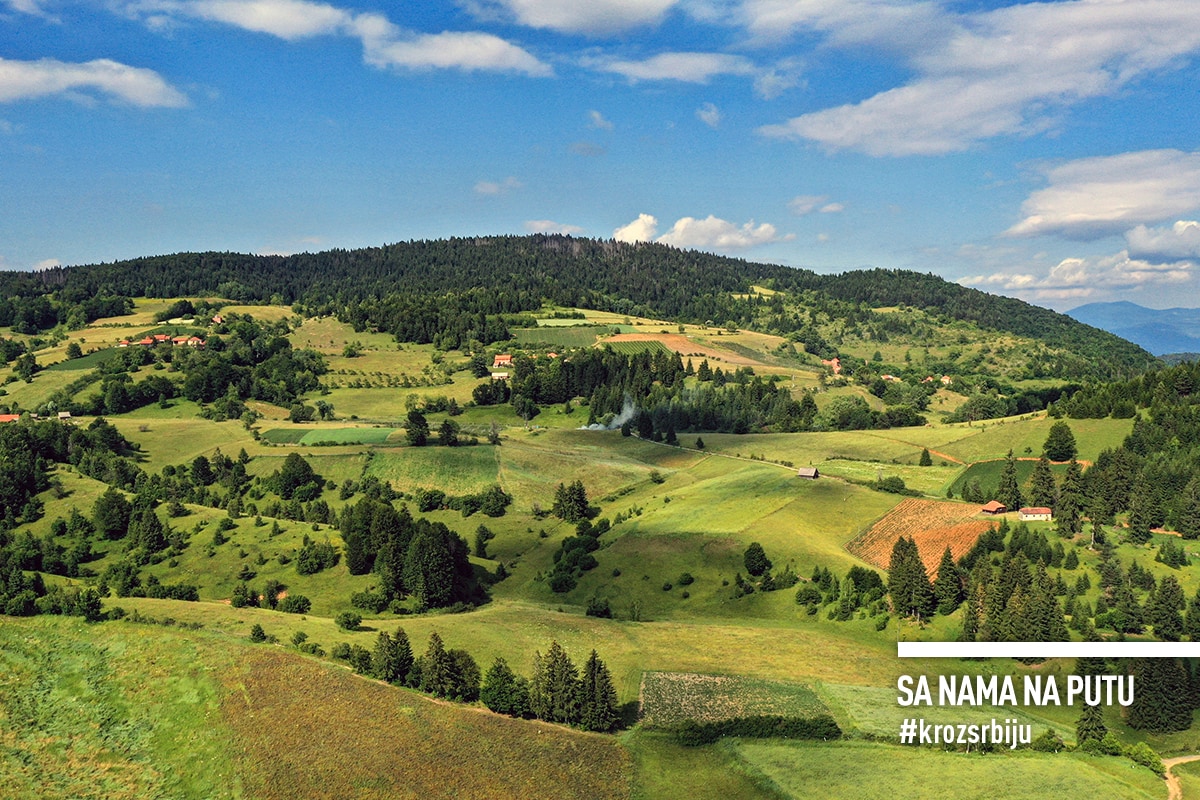
Due to the exceptional preservation of nature, it was declared a Nature Park in 2001, and in the same year, part of the Golija-Studenica Park was protected by UNESCO as a biosphere reserve.
Golija is also believed to be a mountain that “does not know about diseases”. Whoever visited it, at least for a short time, knows why. And he/she will be back, for sure.
2. Because Rudno is a fairy-tale village
About a hundred households settled on the slopes of Golija, at 1,100 meters above sea level. Scattered on wooded hills and sunny meadows, among potato and raspberry plantations and meadows decorated with wild flowers. On the wind rose where sea and continental currents touch.
Family mood. Everyone knows each other, they have coffee together, sip brandy, help each other. Smiling and cordial. Life without hot asphalt, smog and crowds.
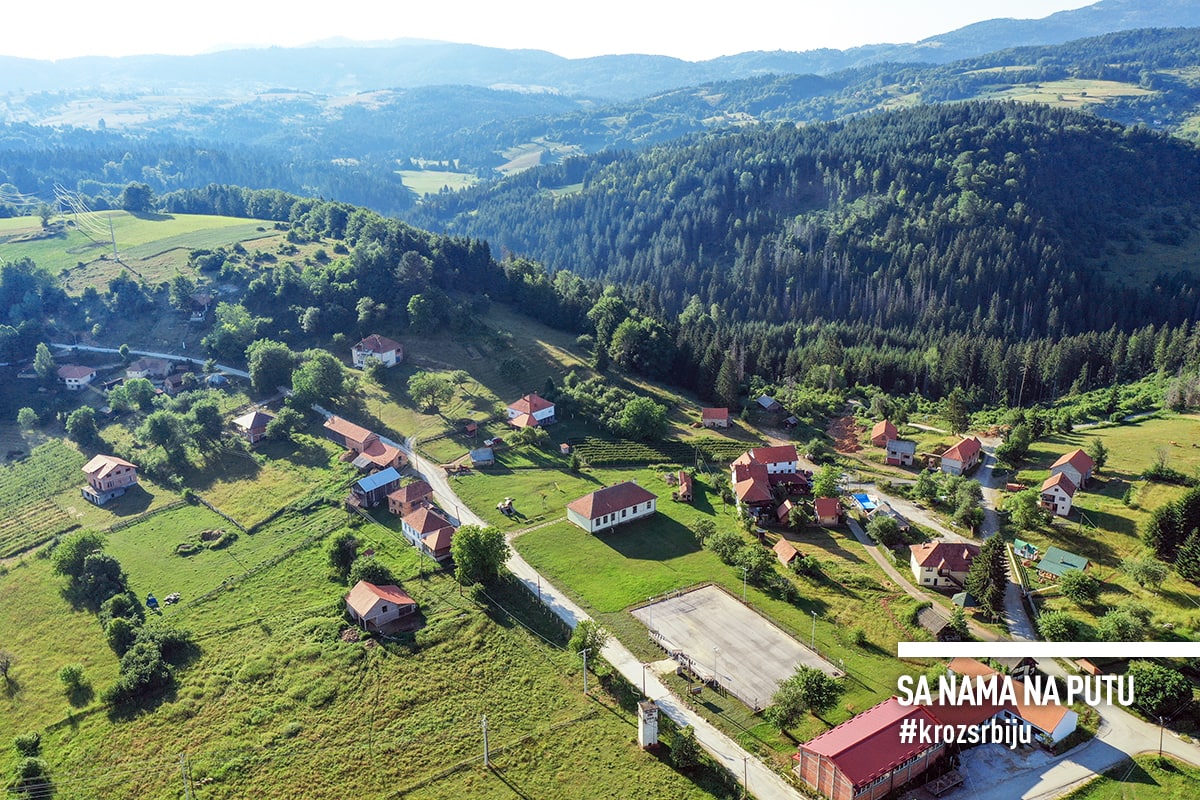
The centre of the village is colourful. Several restaurants, a playground for children on the grass, a school, and a football field whose construction was paid for by a Dutchman. Fascinated by nature and the locals, this man decided to leave them something back. Those who do not have their hills and mountains know how to appreciate them. And hospitality offered. Kudos to the noble Dutchman. In the evening, young people gather on the field, play music from the car, dance, hang out. Rural football tournaments are often organized. Those who are bolder than the World Cup final.
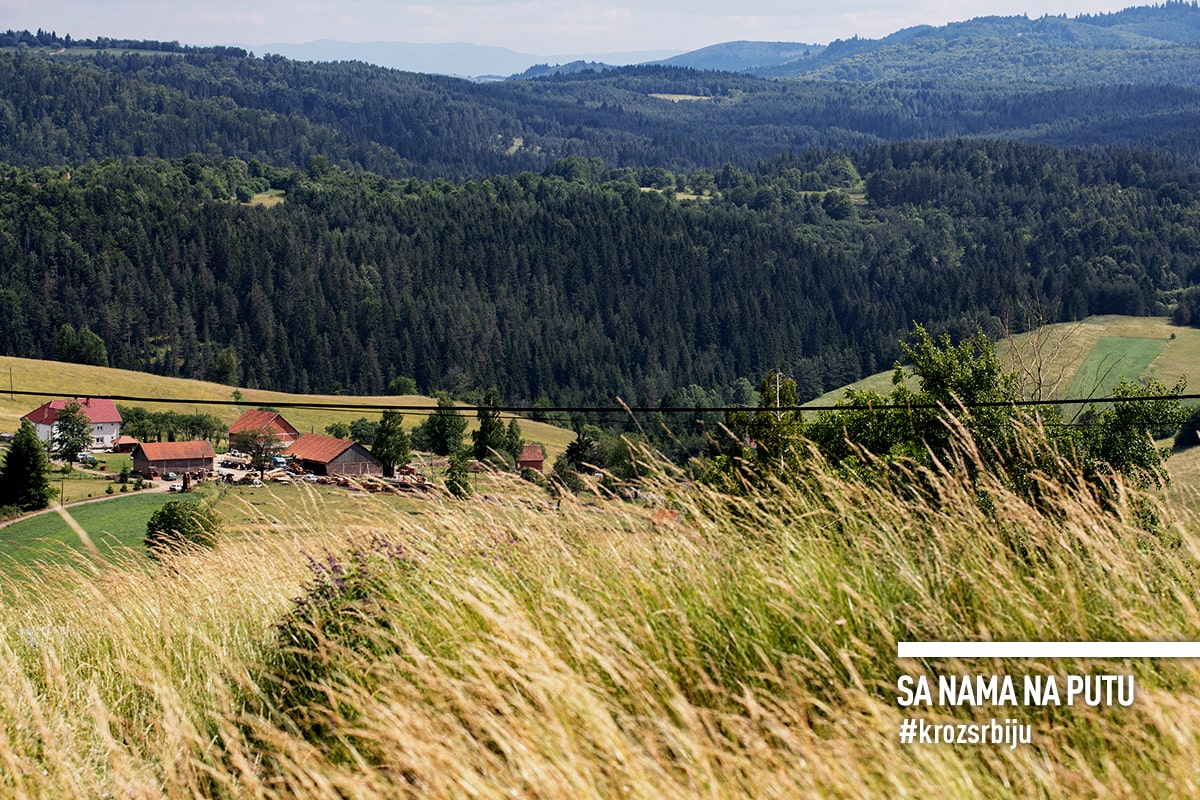
The charms and secrets of Golija can be explored on foot, by bike or quads, which are rented. If you are a good rider, you can also use a horse, although only one is available, as we have learned. The children will certainly be happy if the owner “rides” them around the yard on a horse.
We left the horse to the kids and decided to stretch our legs. We walk, breathe deeply and along the way we pick wild strawberries, tiny, but sweeter than honey. We reach the place where you can see the ski roof of Serbia – Pančićev vrh, on the nearby Kopaonik. Two giants measure each other’s strength across the Ibar river.
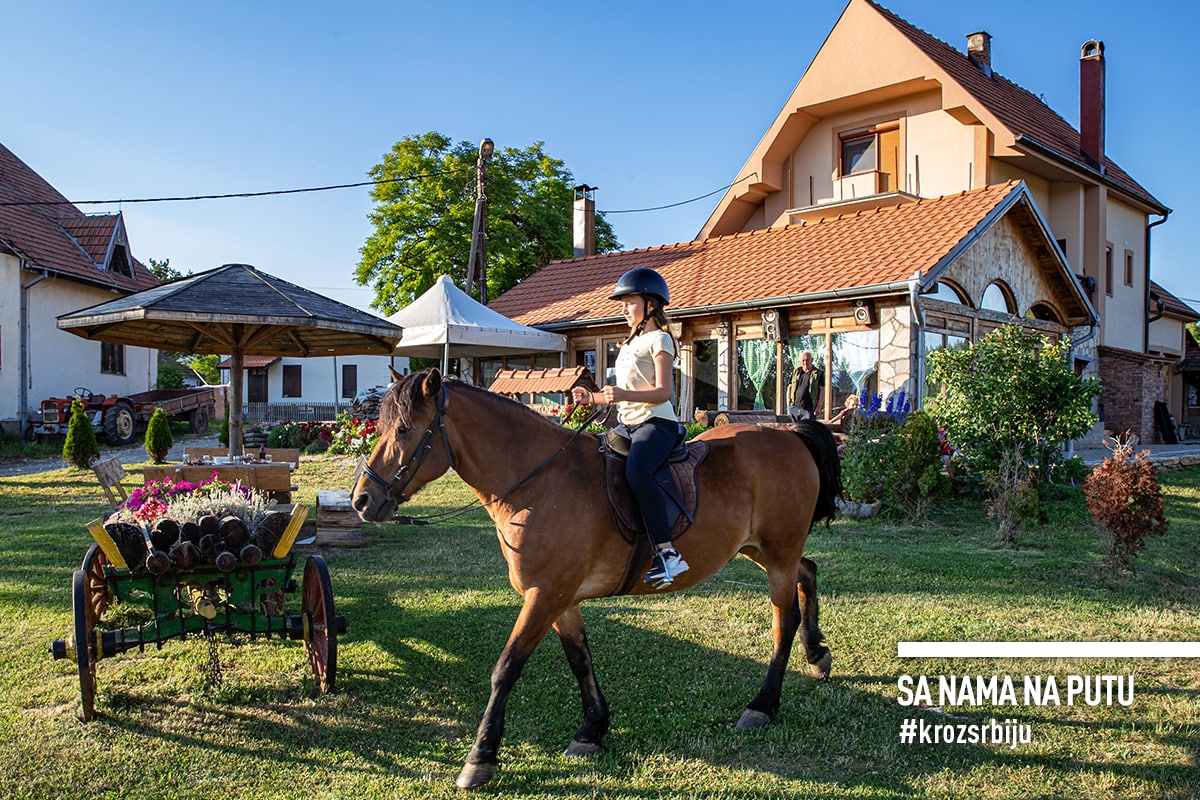
We ended up in Vidovdan accommodation. New, clean, spacious. A dream on a starched pillow. Carefree and deep. Fortunately, there are still housewives who do everything the old-fashioned way.
3. Because the mountain breakfast keeps you full all day
Large terrace overlooking the sheep that graze peacefully just below it. We have breakfast together, each at their own table. The housewife brings out the “train”, never ending. The whole village could be fed. Cabbage and cheese pie, roasted pepper on kajmak (cream), donuts, buckwheat flour pies, meat delicacies… And sour cow’s milk. Healing. Everything from the local gardens and orchards, made with skilled hands.
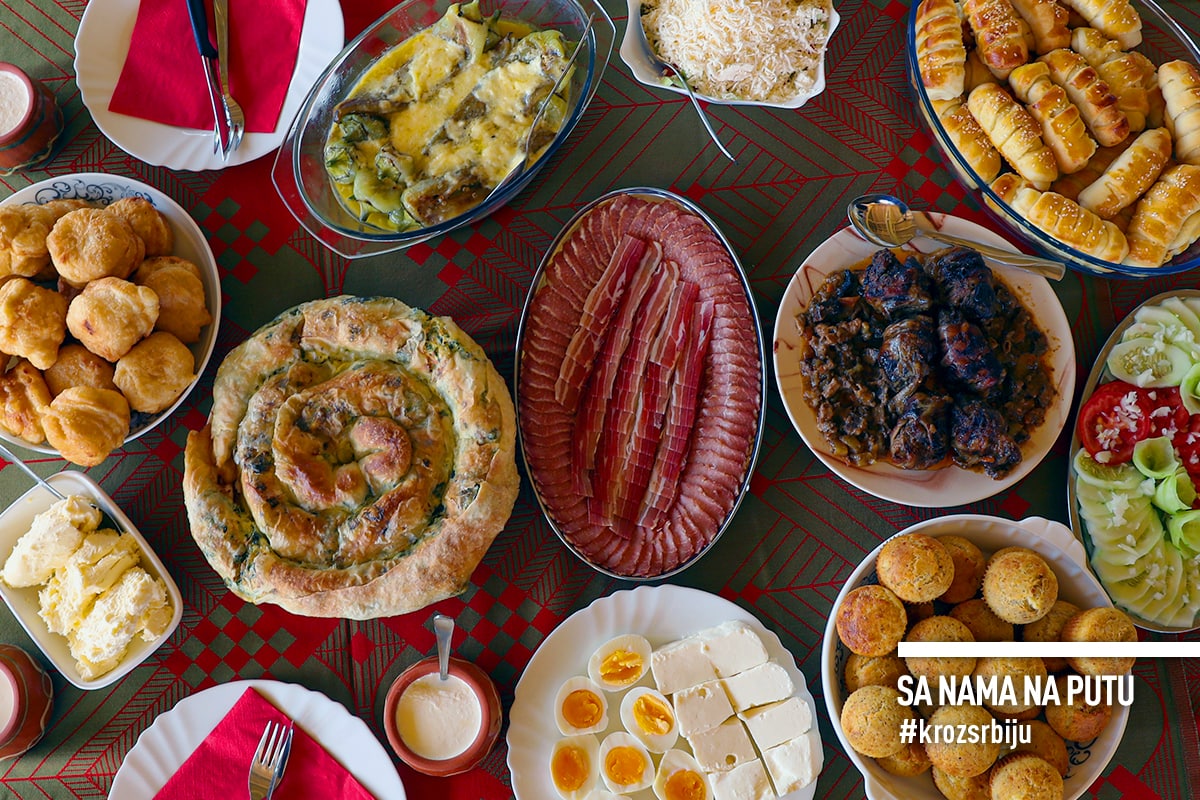
After the morning feast, we wanted to take a nap, but we had to move on. A macadam road leads to the holiest monastery on Serbian ground. Shorter, but more uncomfortable. We didn’t choose it. We were guided by the popular saying: ” The longest way round is the shortest way home”.
4. Because Studenica is the ancestral shrine
It is neither the oldest nor the largest. But it is the first among equals. Mother of all Serbian temples. It settled down in the lush nature, behind the walls, away from ill-intentioned eyes and thoughts. Somewhere between the ground and the blue vault. Elegant and noble, aware of its earthly beauty and heavenly greatness.
Inside the spiritual fortification, a building of white marble, speckled with grey, with a reddish dome, and magnificent wall sculptures stands out. Church of the Mother of God. It was built by Stefan Nemanja, the ancestor of the Nemanjić family, as his grave church, from 1186 to 1196. The influences of East and West, Romanesque and Byzantine style intertwine. Harmonious and magnificent. Around 1230, King Radoslav built a narthex in front of the temple.
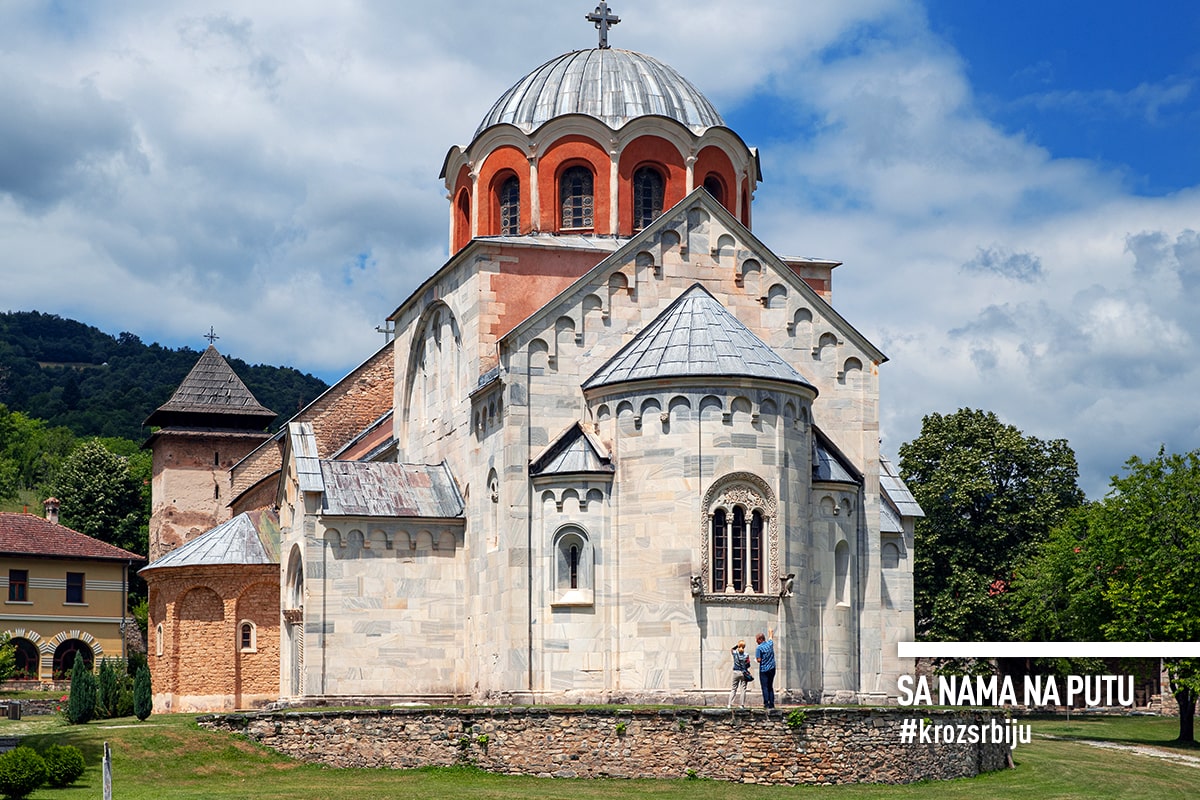
We enter timidly, almost silently. Marble floor. On the original entrance, the western portal, a sculpture of the Mother of God with Christ and the archangels, painted and gilded. Unusual, superbly made, precious. The transition to each subsequent chamber is a higher level – the path to salvation, explains the curator. The relics of Nemanja are kept there, in a sarcophagus.
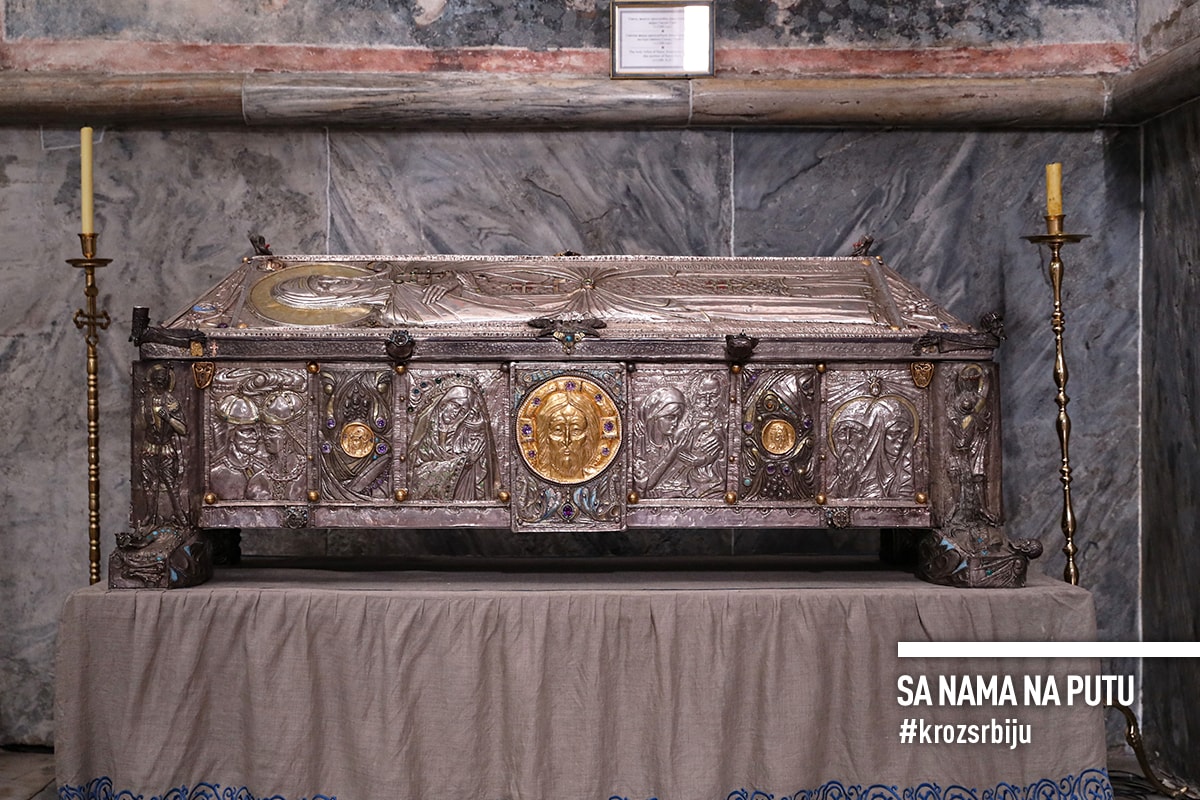
There used to be 14 churches within the monastery, of which, in addition to the Mother of God, two more have been preserved – the King’s, Milutin’s endowment, dedicated to the Mother of God’s parents, St. Joachim and Anna, from 1314, and Nikoljača, dedicated to St. Nicholas, the smallest and the simplest to which visitors do not have access. The bell tower from the 13th century has also been preserved, and Sava’s dining room has been renovated.
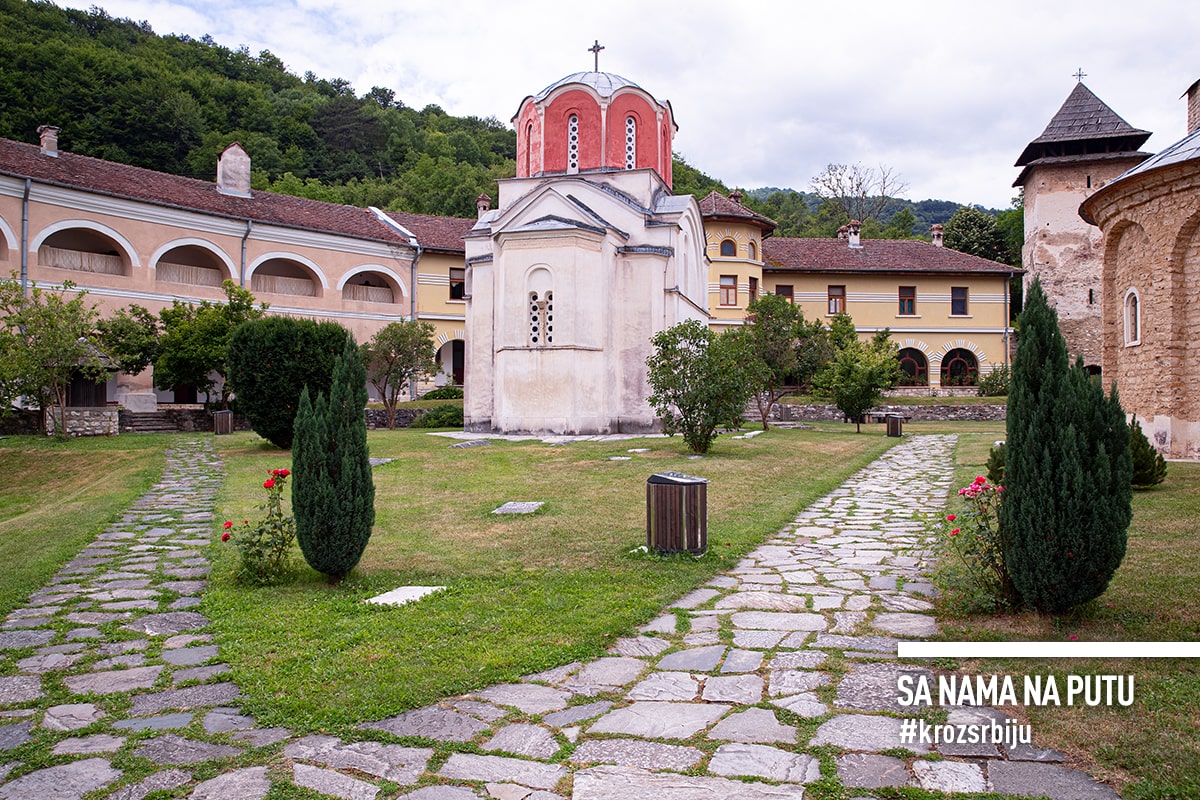
In the monastery, Saint Sava wrote Studenički tipik (Studenica Code), which regulated the monastic life in Serbia, and Studenica was determined as free from church and secular authorities. Independent. It was and remains so. It also has its own cross – Studenica cross, a combination of early Christian symbolism of the anchor as salvation and growth and progress in the form of plant ornaments at the ends. On the facades are carved several drawings that are among the oldest preserved architectural designs and an unusual sundial.
5. Because Studenica frescoes are an invaluable treasure
After the death of his father, Sava invited the best masters of that time, most likely from Constantinople, to paint the Church of the Mother of God, which was painted until 1209. For the first time, the inscriptions on the frescoes were written in the old Serbian language, in Cyrillic alphabet. The symbol of the monastery is the Crucifixion of Jesus Christ, also known as the Crucifixion of Studenica, one of the most beautiful works of Byzantine art of the 13th century. Monumental fresco, of deep expressiveness. Byzantine blue predominates, which was obtained from a very rare semi-precious stone that was imported from Afghanistan, says the curator. A kilogram of paint was worth more than a kilogram of gold. Among the most significant wall paintings are the representations of the Mother of God of Studenica and the Most Holy Mother of God, as well as the frescoes of the Virgin’s life in the King’s Church from the early 14th century.
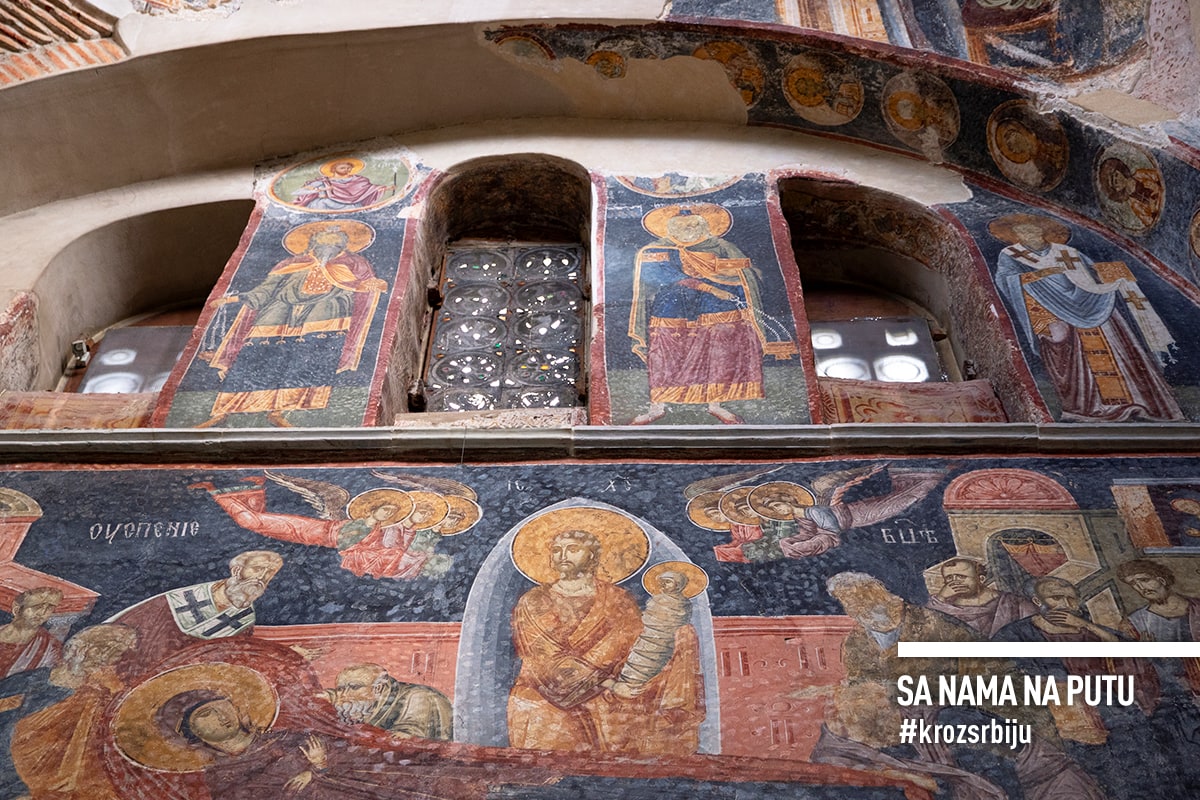
The exceptionality of Studenica, its frescoes and sculptural achievements was also recognized by the UNESCO organization. It was inscribed on the World Cultural Heritage List in 1986.
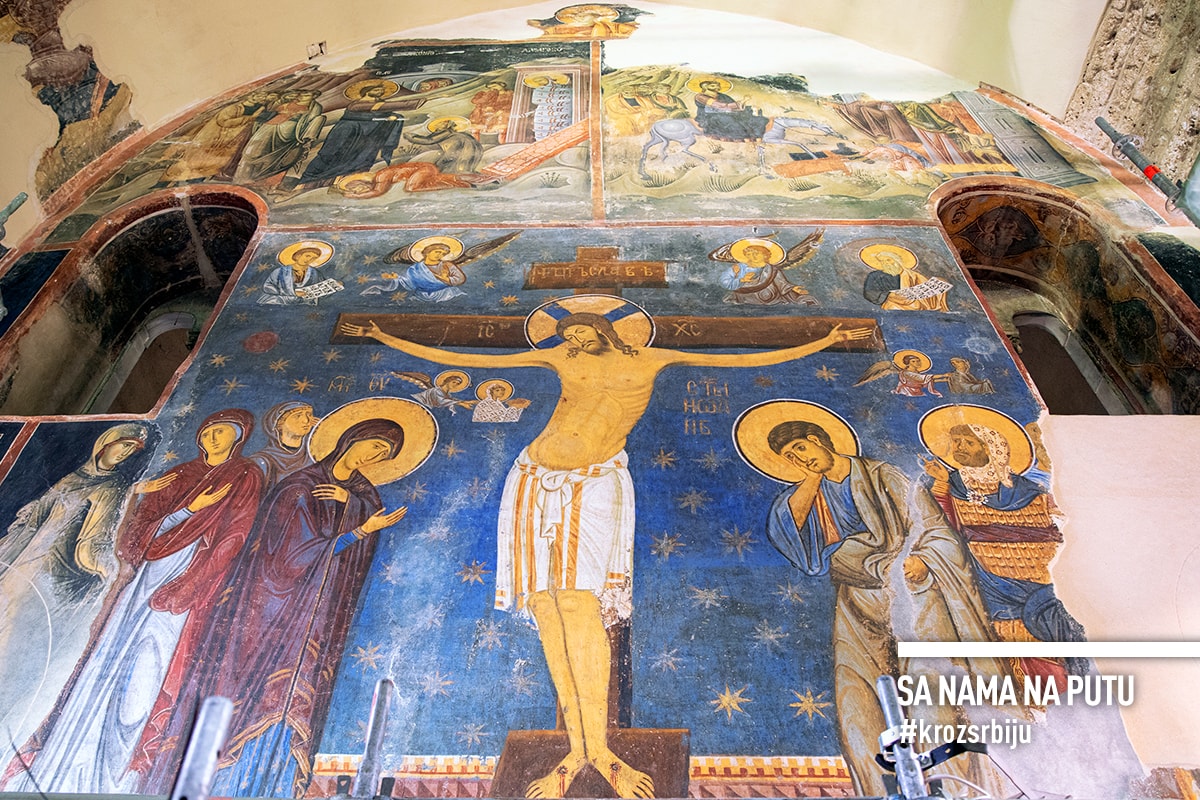
It can be observed and absorbed for hours, days. Always insufficient. It does not fit into words and photographs, nor into amazed looks and unrestrained sighs. Studenica is an art that is no longer being created, a history that writes tomorrow, a faith that does not give up at any cost. Woven into the foundations of Serbian spirituality and statehood. Special in everything. Its own.
6. Because towards Golija, even the breaks are unforgettable
We knew that a long and hard day awaited us, but not whether we would find a convenient place for refreshment in the mountains, so we realized that it was better to make provisions in time. Both for ourselves and the faithful four-wheeler. We stopped at the only gas station on the Miloš Veliki highway, Gazprom Sokolići. Freshly prepared sandwiches, a burger and Italian coffee. Diverse morning flavours for the upcoming adventure. We packed a few Drive Cafe hot dogs, bottles of Jazak water and a few snacks in our backpacks. To have just in case.
